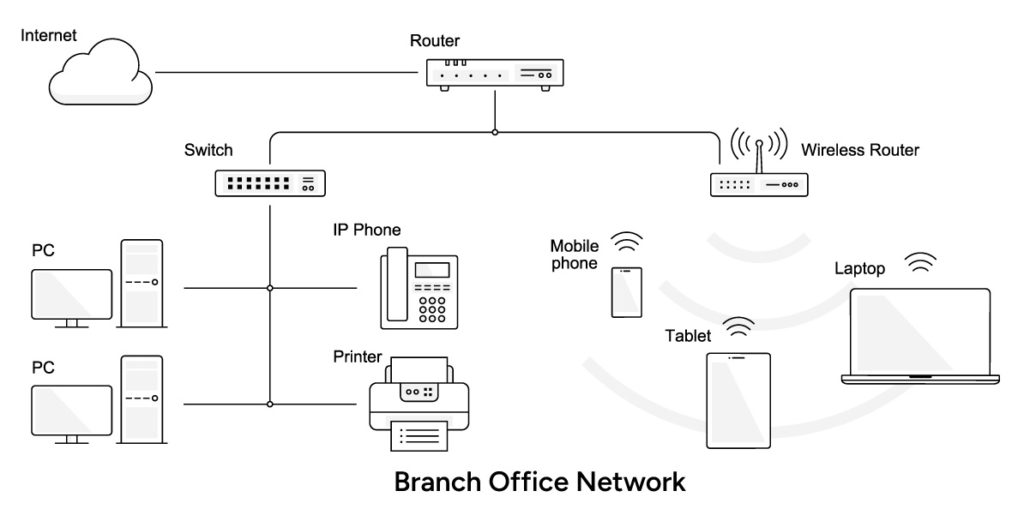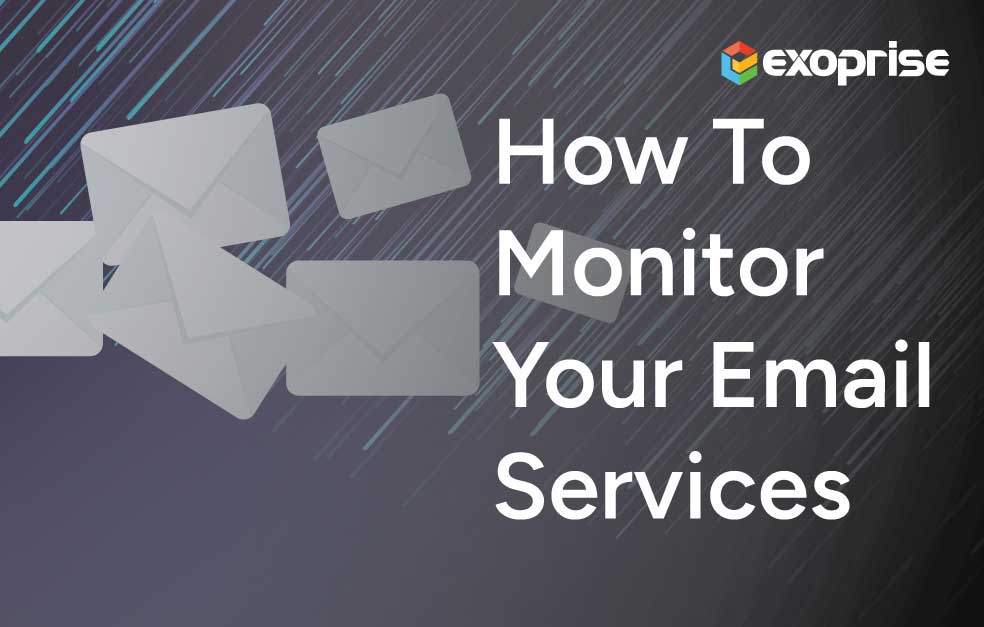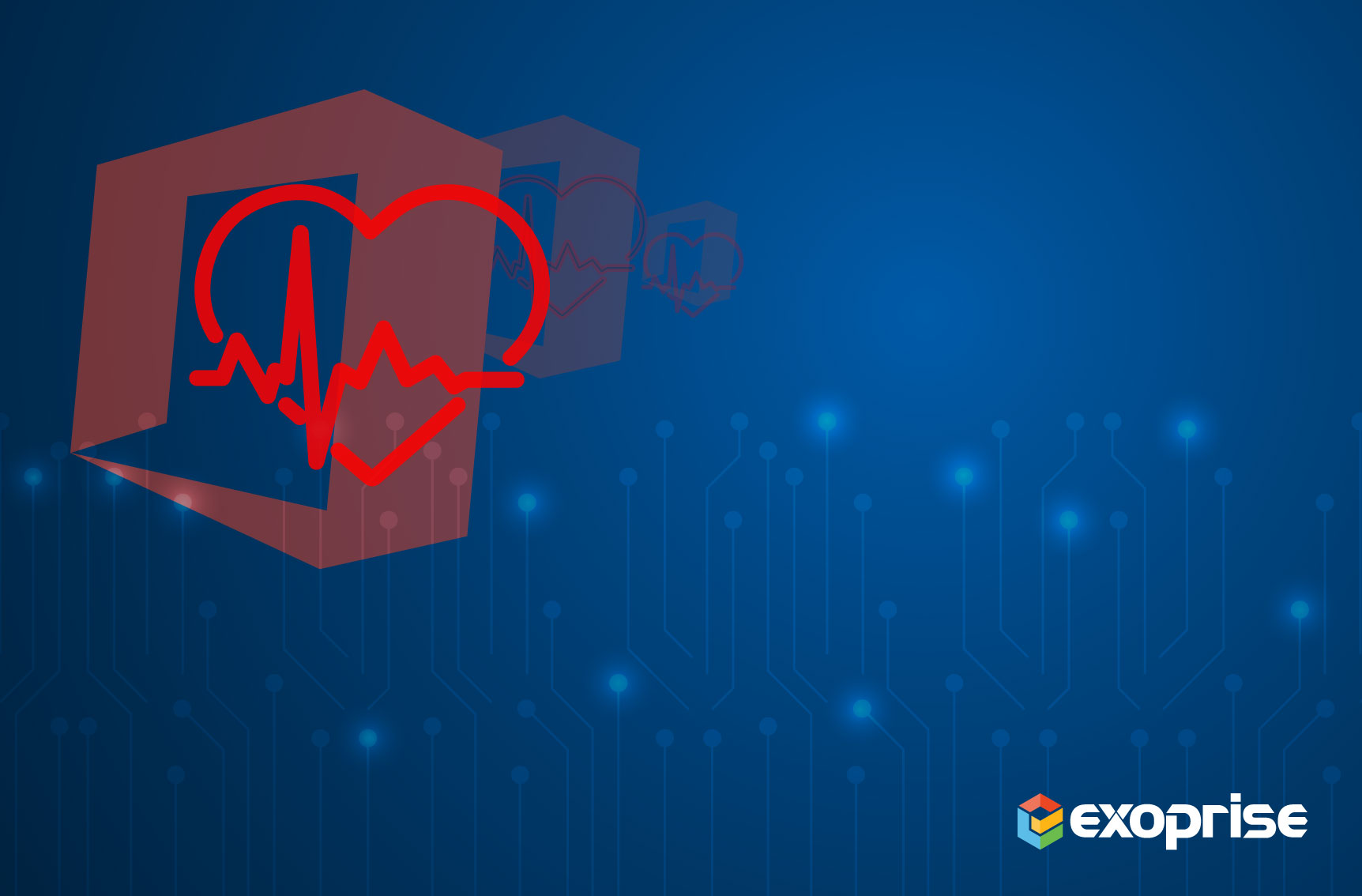Verifying email performance is more than the basic understanding of message flow. Outbound mail in…
The modern workforce has become increasingly remote and distributed, necessitating the need for monitoring solutions to ensure optimal performance in branch offices. Employee Experience Monitoring or Digital experience monitoring (DEM) has emerged as the critical tool for IT teams and businesses to address the challenges associated with remote work environments.
This article combines two informative pieces to provide a comprehensive guide on how to monitor remote branch offices using DEM. We will discuss the benefits of DEM, its impact on employee engagement, customer experiences, and the ability to adapt to evolving technologies in hybrid work locations.
Ensuring Optimal Performance in Remote Offices
Branch office networking is influenced by various factors including application performance, video, voice, and collaboration capabilities, network security adjustments, and branch router upgrades. Organizations are increasingly utilizing Digital Experience Monitoring (DEM) to measure network and application performance through synthetic transactions and sensors, aiming to optimize the employee digital experience by monitoring parameters such as latency, Mean Opinion Scores (MOS), page load times, and branch network connectivity.

The changing work landscape has raised the need for flexible work environments and remote connectivity, requiring businesses to monitor branch office performance closely. SD-WAN technology presents a cost-effective networking solution offering flexibility, improved performance, and enhanced security for branch offices. But none of the newer network technologies are without cost and without the need for vigilance when it comes to monitoring.
The Role of End-User Experience Monitoring
Employee End-user Experience Monitoring (EUEM) solutions proactively measure network and application performance using synthetic sensors and real user monitoring (RUM) from the user’s perspective. By ensuring acceptable latency, response times, page load times, connectivity, and uptime, DEM or EUEM solutions improve employee experiences and productivity.
Cloud-native EUEM solutions offer high availability, immediate troubleshooting, and cloud-to-cloud monitoring capabilities without the need to manage lots of infrastructure. They enable organizations to monitor web applications from behind firewalls all the way out to cloud properties (and back) and effectively troubleshoot major SaaS platforms like Microsoft Office 365, Salesforce, RingCentral and more.
Selecting a cloud-native DEM solution is crucial for seamless monitoring across branch offices and remote locations. This approach ensures high availability for immediate issue resolution without relying on legacy WAN links for performance data transmission, which could exacerbate network delays. In addition, a robust DEM solution should offer synthetic and Real User Monitoring (RUM) functionalities in a single platform to support both active and passive monitoring requirements.
Effective branch office end user experience monitoring necessitates capturing performance data for applications behind the firewall, along with monitoring SD-WAN links and traffic. Furthermore, a comprehensive DEM solution should provide support for SaaS applications like Office 365, enabling fast and reliable access regardless of user location. Cloud-to-cloud and public cloud monitoring capabilities are essential for evaluating network performance across various environments from a unified platform.
Two main aspects necessary for a successful DEM are:
- Synthetic transaction monitoring allows organizations to proactively identify performance bottlenecks by simulating user interactions and transactions.
- Real user monitoring provides insights into actual user experiences, enabling fine-tuning of applications, infrastructure, and network configurations.
With synthetic monitoring, you don’t have to wait for a user to report a problem, IT managers know in advance of users being affected. With real-user monitoring, no stone is left unturned. RUM offers complete coverage for every user’s experience, and they might have different hardware, software, apps, or network conditions.
Benefits of EUEM in Hybrid Work Locations

End-user Experience Monitoring plays an important role in hybrid work environments, where employees access applications and communication tools from various locations and devices. EUEM allows organizations to identify and resolve performance issues before they impact end-users, minimizing downtime and ensuring smooth digital experiences. Additionally, EUEM improves employee engagement and collaboration by optimizing collaboration platforms, addressing sources of frustration, and fostering a positive work environment.
Moreover, EUEM helps optimize customer experiences by assessing website responsiveness, application load times, and transaction completion rates. By proactively addressing potential performance issues, organizations can reduce customer friction and maximize conversion rates, driving business growth.
By integrating DEM solutions with DevOps tools and ITSM platforms, organizations can streamline root-cause analysis and reduce Mean Time to Repair (MTTR) for network-related incidents. Capturing telemetry data at lower network levels assists in rapid issue diagnosis and resolution, especially in branch office and remote user environments with limited IT resources.
Challenges In Branch Office Work Environments
Branch offices face digital experience challenges due to limited IT support, diverse networks, Zero Trust architectures, and VPN/proxy use impacting performance. EUEM solutions help bring awareness and optimize applications and enhance security monitoring for smooth business operations.
Effective branch office monitoring requires distinguishing local and global network issues. Key features of a robust EUEM solution should address the following:
- Synthetic and Real User Monitoring (RUM) in a single platform: support passive and active monitoring in one platform for comprehensive use case coverage. Proactive monitoring needs synthetic transactions, while remote users benefit from real user monitoring.
- Behind the firewall, inside-out application monitoring: remote office EUEM solutions must effectively monitor web applications behind the firewall on WAN or LAN, measuring SD-WAN link performance and traffic for segment routing assessment.
- SaaS and Microsoft 365 Support: EUEM should fully support Office 365 and SaaS for fast user access. It must monitor and troubleshoot these services on one platform efficiently.
- Cloud-to-cloud and public cloud monitoring: cloud-to-cloud and on-premises monitoring are essential for network benchmarking. Monitoring external applications via one DEM platform enhances performance analysis.
- Easily installed: branch office network monitoring must be simple to set up, configure, and adapt to evolving networks with API and flexible settings.
- Intelligent alerting and root-cause correlation: effective DEM requires intelligent alerting, anomaly detection, proactive notifications, and long-term trending within a unified platform.
- End-user simulation on Windows platforms: Emulate and capture end-user application experiences by running on Windows, the preferred platform for corporate users.
- Voice, VoIP, and Video Support: digital experience monitoring for branch offices necessitates monitoring Voice, VoIP, and Video. Platforms like Microsoft Teams, Skype, Slack, and Zoom are key for remote collaboration. Monitoring telemetry for Voice and Video is crucial for an effective DEM solution in evolving business environments.
- Integration with DevOps and ITSM solutions: integration with ITSM tools such as Datadog, SCOM, Splunk, ServiceNow, or Remedy reduces MTTR by simulating digital experiences to provide real-time telemetry for efficient root-cause analysis.
- Low-level telemetry into dependent services like DNS, Proxies, Firewalls, Gateways: detailed DEM solution for networking aids troubleshooting and resolution speed, crucial for branch offices and remote users lacking IT support. Increased telemetry improves diagnostics.
- Quickly identify network traffic problems as either local to the branch or global: Branch office network monitoring requires distinguishing global from local issues. Crowdsourced data aids in troubleshooting outages and slowdowns efficiently.
Conclusion
In the era of remote and hybrid work, digital experience monitoring (DEM) is crucial for maintaining branch office performance. DEM solutions from Exoprise include CloudReady for synthetics and Service Watch for RUM which identify and resolve performance issues, promote employee engagement, optimize customer experiences, and adapt to evolving technologies. A comprehensive DEM solution encompassing cloud-native architecture and detailed telemetry analysis supports optimal user experiences and efficient branch office network management in the digital landscape, driving productivity and business success.


